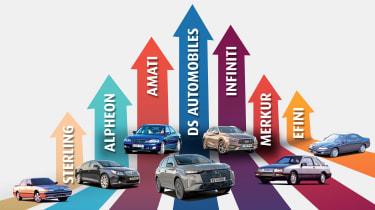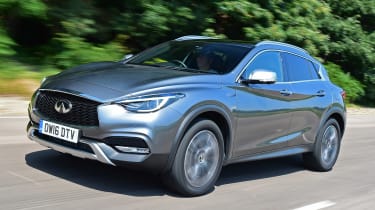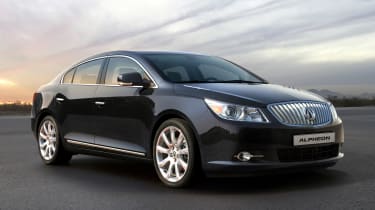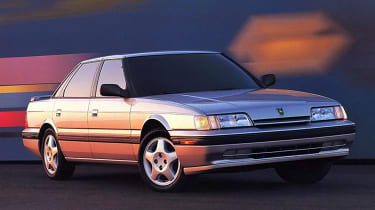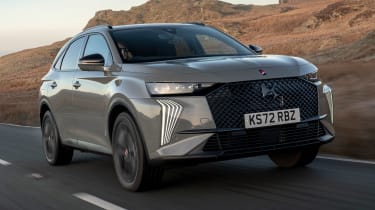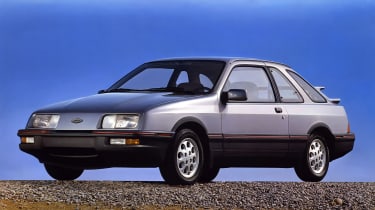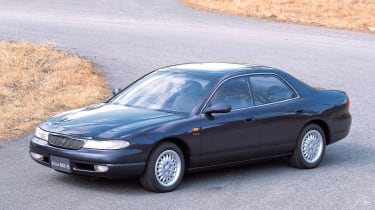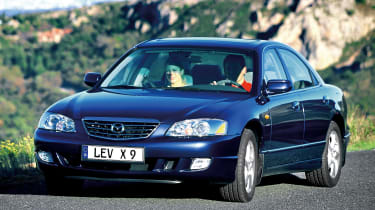Building a luxury car brand: what could possibly go wrong?
Creating posh new car brands isn’t quite as easy as it looks – as some have discovered
Hyundai’s development of the Genesis brand is the latest example of a major car maker creating an upscale new company to cater for customers who want a more premium product.
But Genesis is now being restructured within the Hyundai brand in the UK, which is proof that this can be difficult territory to negotiate in the badge-obsessed car market – as other car makers have found out, too.
We look at seven different brands that found the going tougher than expected.
Infiniti
Remember Infiniti? It’s entirely possible that you don’t, which is shocking really, given that in 2016 it started building its Q30 and QX30 cars in the UK.
Nissan’s upmarket arm faced real problems registering on the radar of British buyers, with its lack of a USP seen as a recurring issue. While Toyota-owned Lexus, for example, gained a reputation for outstanding customer service and, more recently, daring design, Infiniti never seemed quite sure what it was meant to stand for, with even a later focus on establishing itself as a tech pioneer – via the likes of steer-by-wire and variable-compression engines – failing to resonate with the public at large. The brand was pulled from Europe in 2019.
Alpheon
No, not Alfa. Not Alpine, either. Alpheon. This was a curious General Motors enterprise, launched in 2010 when the US giant was not long out of bankruptcy.
GM wanted to launch a big, upmarket saloon in South Korea and a version of America’s Buick LaCrosse – closely related to the Vauxhall Insignia – was deemed suitable. The problem? GM didn’t sell Buicks in Korea.
What it did have were Chevrolet, Cadillac and Daewoo. But offering a rebadged Buick as a Chevy or Caddy was clearly unwelcome, and with Daewoo on its way out, the solution was to create a new standalone luxury brand.
Alpheon’s logo, badging and positioning were decided in a matter of months, and little thought was given to long-term strategy, so it was little surprise that the brand lasted only until 2015, having offered just one model.
Sterling
While the name conjures up an unmistakable image of English pedigree, the reality was somewhat different for Sterling. The marque was created in the mid-Eighties by Austin Rover amid the realisation that trying to sell Rovers in the United States, following the failure of the unreliable SD1 hatch there, would be a tough task.
The first car to wear the Sterling badge was the Rover 800 exec of 1987, but it soon became clear that the shiny new identity couldn’t disguise the dreadful build quality.
Sales were slow, and Rover pulled the plug on Sterling in 1991, proving that branding can do little to help when the product is sub-standard. Still, at least the endeavour hasn’t been completely forgotten – in 2020, a leading US website described the Sterling 800 as one of the “worst cars ever sold in America”.
DS Automobiles
Once a designation for posh Citroens, DS launched its first car as a standalone brand with the facelifted DS5 in February 2015, and told Auto Express at the time: “We are unique in the market. We will appeal to people who want something different – independent thinkers.”
Since then, it has evolved as DS Automobiles, and tried to capitalise on the appetite for high-end French products, pushing a concept that it terms “luxury savoir-faire”.
This has resulted in some undeniably elegant cars – the current DS 7 in particular is supremely stylish inside and out – but those independent thinkers are proving hard to come by. Only 2,326 DSs had been sold in the UK up to the end of November 2023, down nearly 35 per cent on 2022.
Merkur
If it looks like a Ford Sierra XR4i and drives like a Ford Sierra XR4i, then it’s got to be a Ford Sierra XR4i, right? Wrong! It could, in fact, be a Merkur XR4Ti, Merkur being the brand created by Ford to sell European-derived models in the upper reaches of the US market in 1985.
While the XR4Ti itself was sound enough, with a new 2.3-litre turbocharged in-line four-cylinder engine for the States, the branding wasn’t as well thought through.
The name was taken from the German word for Mercury, another of Ford’s marques at the time, but sounded pretty foreign to conservative US ears. Plus, selling Merkur at Lincoln and Mercury dealers stripped the new brand of its uniqueness at a stroke.
Although the Merkur Scorpio – a rebadged Ford Granada Mk3 hatchback – followed, sales were underwhelming and the whole brand was axed in 1989.
Amati
“Posh brand envy” clearly consumed Mazda in 1991. Among its Japanese rivals, Toyota had Lexus, Honda built Acura and Nissan was developing Infiniti. The Hiroshima maverick wanted a piece of the action.
And so, Amati was born, a new luxury badge destined for North America that would adorn a number of saloons, including – wait for it – a V12-engined rival to the Mercedes S-Class and Lexus LS.
The timing was unfortunate, however, because the Japanese economy crashed badly in 1991. In such a challenging climate, Mazda – having already invested hundreds of millions of dollars into the project – simply didn’t possess sufficient funds to get the brand into showrooms, and the idea was canned in 1992, sealing Amati’s fate as a luxury marque that never actually got round to releasing a car. One of the proposed saloons did eventually emerge, however, as the Mazda-badged Millenia, or as we knew it here, the Xedos 9.
Efini
Of course, Mazda’s innate contrariness meant that launching one luxury brand wasn’t sufficient. At the same time as it was planning Amati for the US, it was launching Efini in its home Japanese market (and to add to the confusion, it was also preparing to badge its executive models as Xedos in Europe).
While Efini’s range comprised mainly more swanky, rebranded existing Mazda models (including the 626, MPV and RX-7 that were familiar to UK buyers), it did launch one unique car – the MS8, a rather fetching sleek saloon that featured pillarless doors.
Efini lasted until 1997 when financial considerations prompted Mazda to call time on it.
Click here for our list of the best luxury cars on sale...
